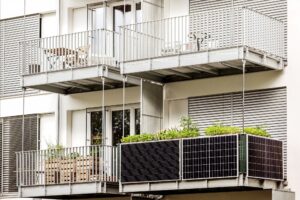André ten Bloemendal, vice president of Sales Europe for ChargePoint writes for Air Quality News about the importance of electrifying delivery fleets.
As companies seek to facilitate a green economy, they will be looking to cut their carbon emissions.
Some of the way’s companies can do this include cutting waste and travel, as well as harnessing renewable energy.
However, for companies, especially delivery businesses or companies with a high number of deliveries, a key way to reduce emissions is by switching to an electric fleet.
Last year Amazon announced its decision to cut its emissions by ordering 100,000 electric vehicles for its delivery fleet.
Amazon has started to take full control over its delivery as well as its emissions, by creating its micro-economy, setting itself apart from others within the industry.
This micro-economy allows for increased agility and flexibility as well as allowing companies to take greater control of their emissions, begging the question of whether this is the future for fleets.
Conventional wisdom isn’t always wise
While conventional wisdom suggests low oil prices will slow the switch to EVs, the facts on the ground belie that. Analysts don’t see any indication that the pandemic is affecting the long-term global trend toward electrification.
Many governments around the world are doubling down on EVs, and more still view the crisis as an opportunity ‘to speed up a change which is already viewed as inevitable.’
A recent UK survey found that 45% of people say that ‘the radical improvement on air pollution’ since the pandemic began has caused them to consider an EV as their next vehicle.
New numbers back that up while overall vehicle registrations in the UK are predictably down (31% YoY in 2020), battery electric vehicle (BEV) registrations have leapt more than 204%.
Led by the Tesla Model 3, Germany even recorded a record month for EV sales in March.
Why Delivery Fleet Electrification Will Continue Apace
Without clean options, delivery fleets are increasingly at odds with government mandates for emission reductions; rules that, as I mentioned earlier, may become more stringent going forward.
In Europe, by leveraging a combination of regulations and incentives, 24 cities with a combined population of over 62 million people plan to eliminate internal combustion engine (ICE) vehicles from metro areas entirely by 2030.
Electric trucks, vans and buses are far less expensive to fuel and maintain than their ICE counterparts and, with battery prices falling, will reach cost parity with traditional vehicles by mid-decade. With the government incentives available (both for the vehicle and chargers), many EVs are already less expensive today.
Further policy and technology developments are cementing the future of EVs.
The EU has undertaken a thorough reform of its energy model to make 80—95% GHG reduction by 2050.
To reach this goal, the delivery vehicles powered by renewable energy sources and electric is key to the transition.
The power grid faces a challenging future due to intermittency and the non-dispatchable nature of wind and solar energy production, but flexibility needs can migrate from generation to load, with the expansion of demand-side resources and storage technologies.
Modern charging solutions can offer demand response, peak savings and ancillary services to keep a reliable power quality, stable frequency and flatten the load profile.
Essentially these vehicles are not only important to lower actual GHG numbers, but offer a method of ensuring reliance on more and more renewables is possible regardless of sun or wind conditions.
What Do You Want the Future To Look Like?
To be honest, nobody knows what the world will look like once this tragedy is over and life begins to return to some semblance of normalcy. My guess is that people, businesses and state and local governments will hasten the push for lower greenhouse gases (GHGs) and harmful emissions from transportation.
As we’ve seen again and again throughout this crisis, once people identify a need, they’ll do whatever it takes to address it.
Now that we can all picture a world without air and noise pollution, it’s only a matter of time before it becomes a reality. In fact, in a word I’m hearing more and more these days, it’s ‘inevitable.’

















Leave a Reply